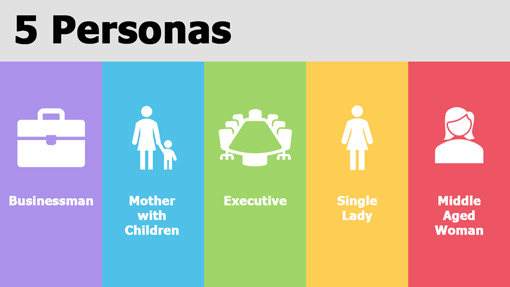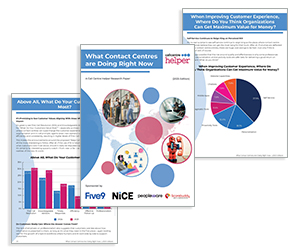Many businesses create customer journey maps that assume all customers follow the same path and have similar needs.
However, customer expectations vary, and failing to account for different personas and contexts can lead to a poor understanding of CX.
To find out more, we asked Alex Mead, to explain why companies should take a more personalised approach to journey mapping.
Video: Using Personas in Customer Journey Mapping
Watch the video below to hear Alex discuss how to use customer personas to improve customer journey mapping:
With thanks to Alex Mead, for contributing to this video.
This video was recorded when Alex Mead was a panellist on our 2022 webinar ‘Making Customer Journey Mapping Easier‘
Why One-Size-Fits-All Customer Journey Maps Don’t Work
The Gap Between Businesses and Customers
Many brands believe they have a strong understanding of their customers. However, research shows a clear disconnect – while four out of five businesses think they know their customers well, only one in five customers agree.
“Too many customer journey maps are one-dimensional, and assume all customers undergo similar journeys and have similar preferences and needs.
As per many stats, four out of five brands think they have a very holistic understanding of their key customers. Yet only about one in five customers actually feel that the brands understand them at all.
There’s a mismatch, as there often is, between what companies think and what customers think about CX. So how should we do it? “
This gap often results in CX strategies that do not match real customer needs. To improve, businesses must consider different personas and their unique journeys.
The Importance of Customer Personas
Instead of a one-size-fits-all approach, companies should map out key customer personas. These aren’t just demographics—they represent different customer needs and expectations.
“First, consider all of your customer persona types. I went through the customer persona phase. I don’t mean mapping demographics, I just mean do you have young children, do you have single mothers, do you have executives, etc.?”
For example, in the airline industry, five common personas might include:
- A businessman – prioritises efficiency and seamless travel.
- A mother with children – needs extra support and flexibility.
- An executive – expects premium service and exclusivity.
- A single woman – values safety and comfort.
- A middle-aged woman – may focus on service and reliability.

Each persona will experience the journey differently, and businesses must consider their unique expectations in various situations.
“We came up with five personas, but whatever personas are relevant for your business, make sure you consider them.
Each persona will have a different expectation of their customer journey and their CX, but more importantly, you have to think of the context of each situation and persona.
When you consider that, what is the experience you should be giving this persona in this situation against that one?
Again, you can’t capture that on a generic one-size-fits-all journey map. And finally, when you’ve considered this, how did you get that?
When you assess your business against this approach, you’ll realize, “Oh my God, we are so far off, it’s unbelievable.” That’s why I think most customer journey maps don’t work.”
Why Context Matters in CX
Beyond personas, situational context is key. Customers may have very different priorities depending on their circumstances.
For example, if a lost bag scenario occurs at an airport:
“Here’s an example of a journey map, and this is the reason why you need to think about context and personas.
In this situation, there’s a lost bag; they’ve arrived at the airport and the bag isn’t with them.
What if the customer is a mother with children, and in that bag is a wedding dress or bridesmaids outfit? She doesn’t care about compensation, she needs to find that bag, whatever happens, and she needs it to be easy for her to talk to the airline, not a generic call centre queue.
But if you’re a young lad and you’re on holiday with friends, you lost your bag and they offer you £500 compensation – great, that’s perfect. So, this is a great example of situational context.”
A generic journey map fails to capture these differences. Contact centres must design CX around real-life situations and needs, rather than assuming a single approach will work for everyone.
Rethinking Customer Journey Mapping
By considering both personas and context, contact centres can create more effective journey maps that reflect real customer expectations.
This approach helps close the gap between what companies think they deliver and what customers actually experience.
If you are looking for more great insights from the experts, check out these next:
- Emotional Motivators and Their Impact
- Finding the Right Balance in Workforce Flexibility
- An Introduction to The CX Chain
- How to Avoid the Fairness Trap When Creating Schedules
Author: Robyn Coppell
Reviewed by: Hannah Swankie
Published On: 8th Nov 2022 - Last modified: 12th Jun 2025
Read more about - Video, Alex Mead, Customer Experience (CX), Customer Journey, Videos





















